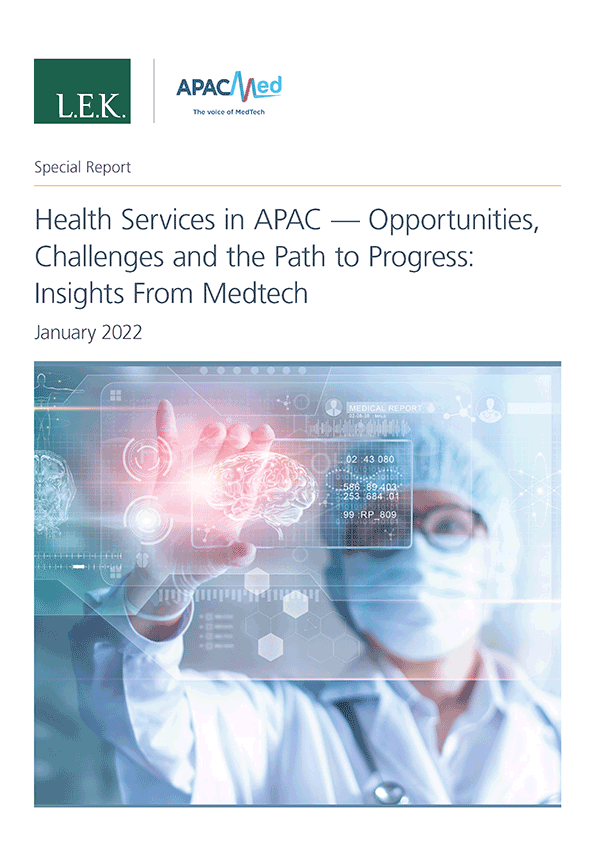

Health Services in APAC — Opportunities, Challenges and the Path to Progress: Insights from Medtech
- Special Report


The medtech industry has excelled at producing cutting-edge medical devices, therapeutics, and health technologies for decades. There is now a growing recognition of the need to directly drive and enable innovation in the delivery of health services, to maximize the efficiency, capacity and responsiveness of healthcare systems. While the role of medtech has been evolving from offering medical devices to also providing a range of value-added clinical and operational services that complement effective healthcare delivery, the adoption of medtech-supported clinical care delivery services today faces significant barriers. Challenges include limited reimbursement, unclear legal frameworks and onerous data privacy regulations, among others. These barriers are evident across all geographies, especially APAC (including Australia, China, Japan and Korea, to name a few), with each country having its own additional considerations.
However, despite these challenges, a number of medtechs — through persistence, evidence-based persuasion, and astute partnering — have demonstrated best practices in driving service adoption. These operators have been reviewed as case studies in this report. Additionally, the report also analyzes the revolutionary ways in which medtechs are expanding their clinical care delivery service offerings to overcome these barriers, which can be broadly classified into these areas:
This report concludes with best practice recommendations and key considerations for policymakers, institutional payers and providers that play a critical role in galvanizing change, setting the incentives for permanent shifts to more effective patient care through the adoption of innovative services.